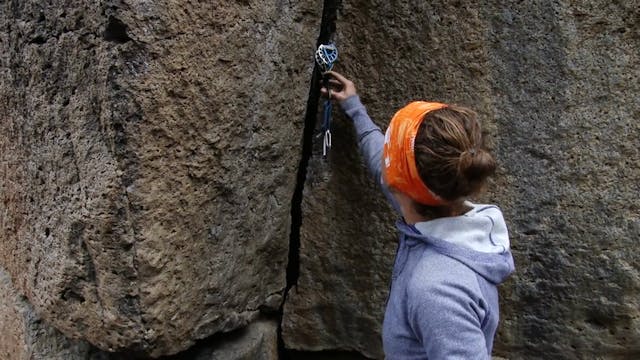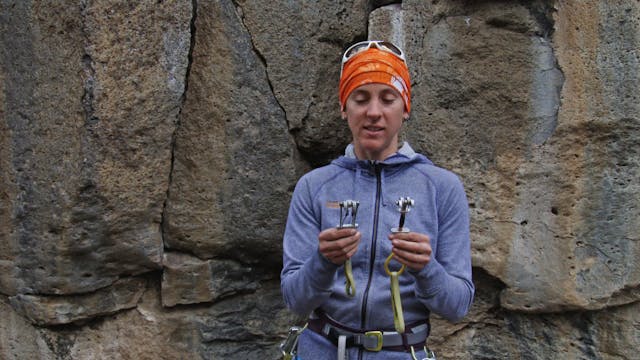Traditional Climbing: 6. Cam Placement and Retrieval
Traditional Climbing
•
1m 51s
In this video we look at how to place and remove cams.
The most important tip for retrieving a cam is also the simplest: first, try to visualize exactly how the cam was placed, then just reverse that motion to get it back out again.
For example, if the cam is placed in a narrow constricted section of a crack that widens slightly above that point, then it’s likely the lead climber had initially inserted the cam in the wider section, and pulled it down into the constricted section (note that cams are best when placed in pods, not in gradually tapering cracks—this might be more suitable for a nut or hex).
When removing a cam, squeeze the cam trigger gently to release it from its set position in the crack. Move the cam to the wider section, wherever that may be. Often, you will be able to pull a cam straight out, but sometimes you will need higher powers of visualization (or tips from the leader) to get the cam out.
Tip - When retrieving a cam, pull the trigger just enough to wiggle the cam free. If you pull the trigger all the way—so the cam is fully cammed—and then accidentally move it into a tighter space, the cam can get really, really stuck.
We hope you found this video helpful. Feel free to comment below with questions or thoughts!
Please remember, climbing is inherently dangerous. Climb at your own risk.
Up Next in Traditional Climbing
-
Traditional Climbing: 7. Cam Placemen...
In this video we review considerations for placing hand-sized cams.
1. Pull the cam’s trigger until the lobes are about 70-80% cammed (100% is when you pull the trigger as far as it will go). If the cam is too small for the crack, we say it is “tipped out” (see video for visual).
2. Look f...
-
Traditional Climbing: 8. Cam Placemen...
In this video we review considerations for placing small cams. Small cams are cams that range from 0.5 - 2.5 inches in size. Because they are smaller, they also have a proportionally smaller range of crack sizes they will fit.
- Less leeway for placement size. Due to the smaller size, a small ...
-
Traditional Climbing: 9. Cam Consider...
In this video we review considerations between using a 4 lobe (Alien) vs 3 lobe (Metolius TCU) cams. Both can be useful, and have different applications (see below):
4 Lobe:
- Wider than the 3 lobe, so not ideal for shallow cracks.
- More surface area than 3 lobe, can inspire more confidence...


